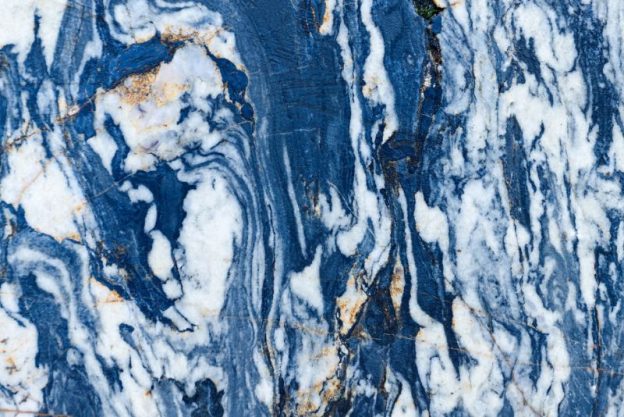What is Marble?
Marble is a type of metamorphic rock that is primarily composed of calcium carbonate (CaCO3) and can contain other minerals. It is formed when limestone undergoes high pressure and heat, resulting in the calcite crystals recrystallizing and fusing together. Dolomitic marble is formed from dolostone under similar conditions.
How does Marble Form?
During metamorphism, the calcite crystals in the limestone recrystallize and become larger, eventually forming interlocking calcite crystals. This recrystallization process obscures the original fossils and sedimentary structures of the limestone and creates a new, harder rock without foliation. As the level of metamorphism increases, clay minerals in the marble can change to micas and silicates, and some can contribute to the formation of gem minerals like corundum.
Marbles Reaction to Acid
Limestone and marble are extremely susceptible to acid erosion or etching because of their abundant presence of calcite mineral. Unlike other types of stones, such as granite or sandstone, the mere presence of even mild acidic solutions can trigger a chemical reaction that dissolves the calcite, leading to significant damage and deterioration of the stone.
What Colours Does Marble Come In?
Marble comes in a wide range of colours and patterns that can add elegance and sophistication to any application. No matter the colour or pattern, marble requires continued maintenance to keep its shine and colour. White marble provides a natural, clean finish while black marble offers a modern and edgy aesthetic. Grey marble is a tasteful pattern that blends well with other design choices, while cream marble is a sensible option for tile flooring and countertops. Red marble adds a bold distinction to any application, while blue marble provides a calming effect. Brown marble is a beautiful stone that matches natural earth tones, while green marble provides a bolder option. Yellow marble is subtle yet daring, and Calcutta marble provides a high-end, refined polish to any room.
Why Is Marble So Expensive?
Marble’s exquisite qualities make it a luxurious addition to any space, which is why it’s highly sought after. Its durability and timeless beauty contribute to its high value. However, the process of transforming raw rock into opulent slabs is an energy-intensive one, which adds to the cost. So, while marble may be pricey, its unmatched elegance and longevity make it a worthwhile investment for those seeking to elevate their interiors.




